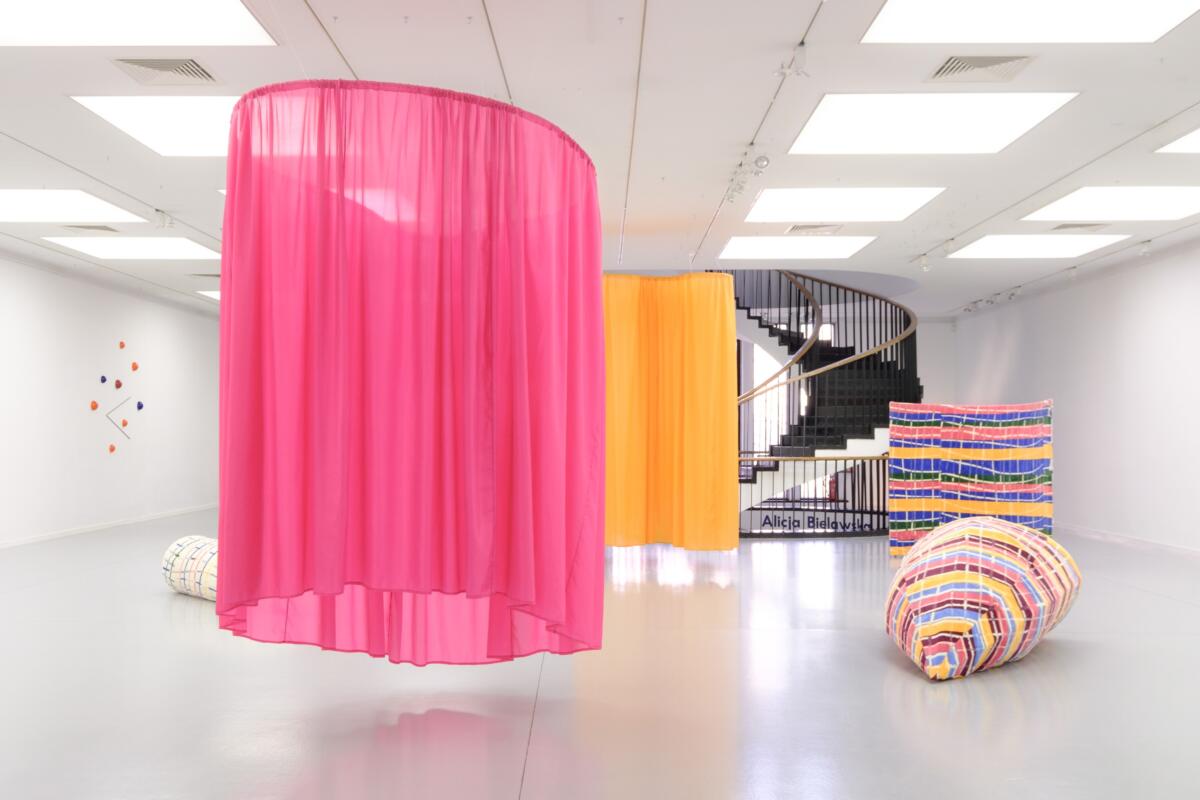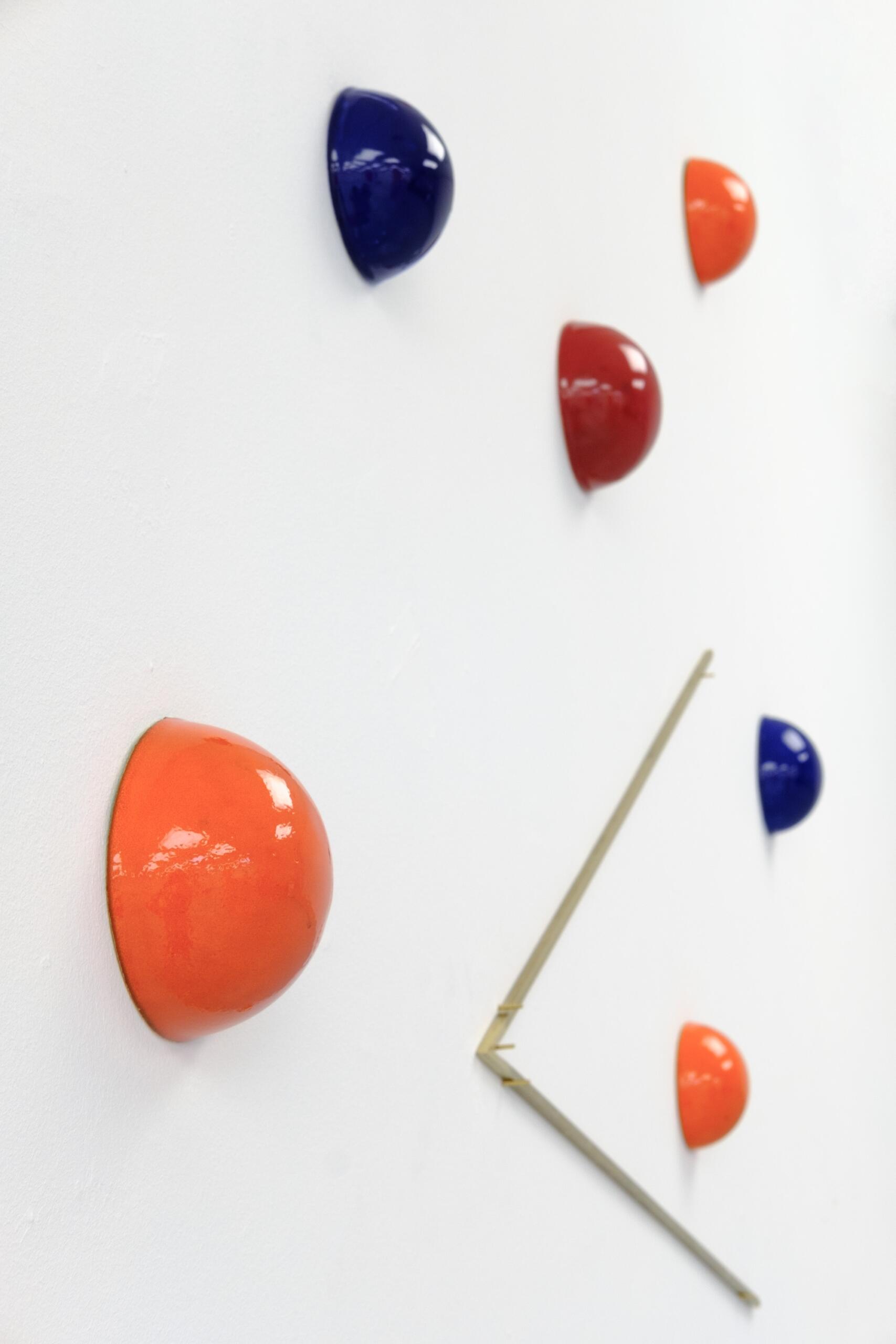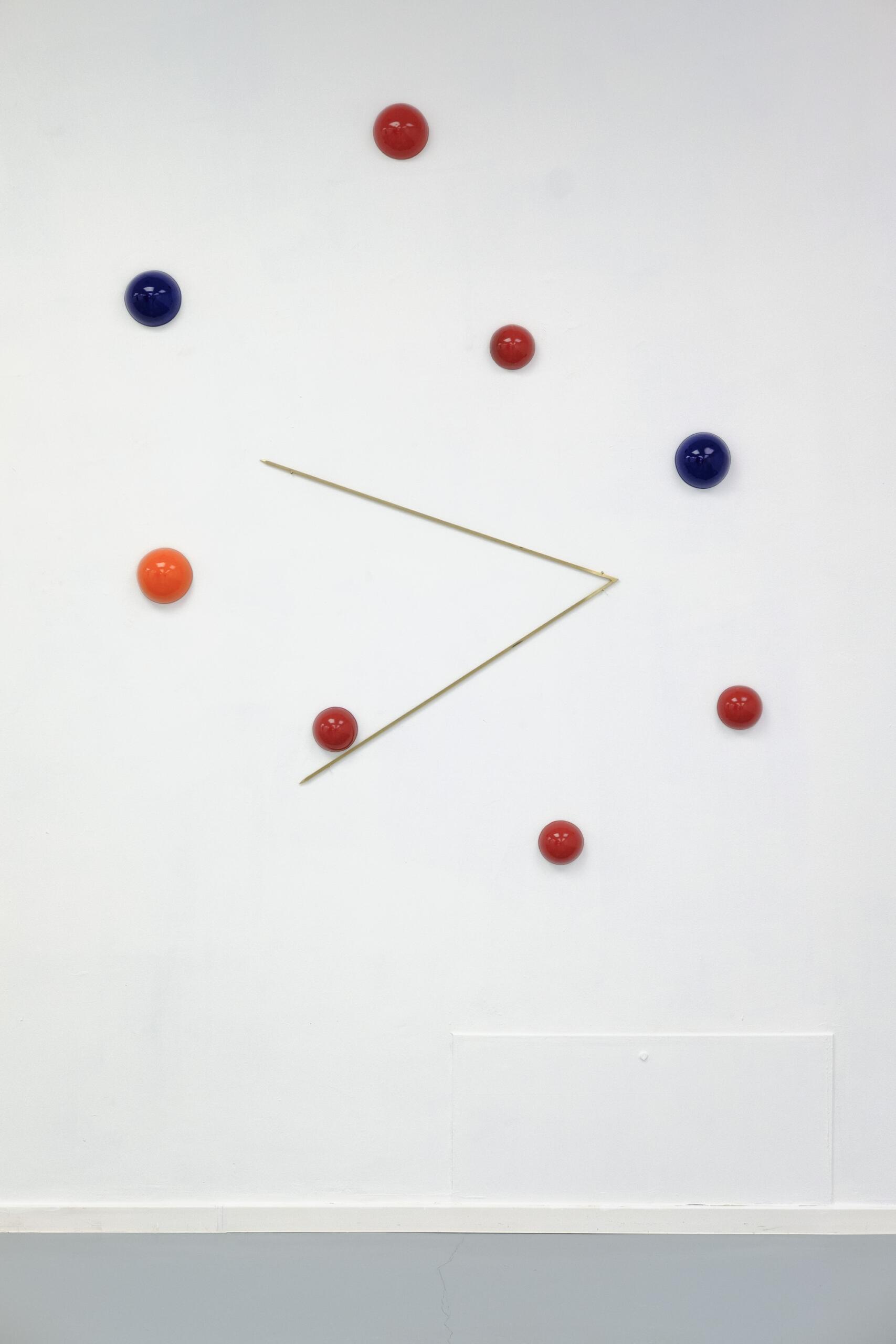
Powszechnie wiadomo, że większość narracji kulturowych generowanych przez Zachód, nie uwzględnia lub nie pozwala na myślenie ekosystemowe, gdzie ekosystem rozumiany jest jako splątana sieć ludzi i nie-ludzi. Historia – przeszłość, życie jednostki, jej przyszłość – jest konstruowana według pryncypiów iluzji „obiekt i tło”, z obiektem (ludzką sylwetką) wyraźnie na pierwszym planie i wyznaczającej ścieżkę interpretacji[1].
Elvia Wilk
As Joanna Bednarek noted some time ago, Descartes is “the villain of twentieth-century philosophy”[2]. Nowadays, he is often blamed for the objectification of animals, the painful de-subjectification of nature and, perhaps above all, for the unnecessary and too resolute separation of body and mind[3]. Admittedly, as Bednarek soberly observes, one of the founders of modernity cannot be blamed for all its sins and their consequences; nevertheless, our contemporary state of knowledge makes us revise the foundations defined on binaries. Rather, contemporary theories assume an interdependence between different “network actors” (actor-network theory, which was developed by Bruno Latour[4], among others) and thus contradict the vision of humanity as a separate, finite and uninfluenced crowning achievement of unconscious activities of evolution. In the vision offered by modern science, man ceases to be a unique, favoured creature created in the divine image and turns out to be dependent on many other human and non-human factors. The hitherto image of man as ruling over the eternally passive (ready for projections and abundant in resources) Nature thus requires verification.

Alicja Bielawska, ‘Exercises in Interweaving Times and Places’, exhibition view at Galeria Miejska bwa in Bydgoszcz, photo courtesy of the artist
In the humanities, the posthumanist trend, attributing subjectivity to both human and non-human organisms, is becoming increasingly clear. Thanks to the research of zoologists (and primatologists in particular), we are discovering further truths about our “minor brothers” – the more we know about animals, the more similar they seem to us. Like humans, they can mourn, have the capacity to empathise, make friends[5]. In turn, in the sciences, as a complement to computationalism – a view that assumes the validity of comparing the processes occurring in the nervous system to the operation of an advanced “calculating machine” – one speaks of the theory of embodied cognition[6]. According to this hypothesis, the division of roles between body and mind in cognitive processes is not as clear and distinct as previously thought; rather it is closer to the theories of Maurice Merlau-Ponty and his phenomenology, which assumes an active role of the body as a cognitive organ – embodied cognition emphasizes the key function of the motor system in cognitive processes. Thus, consciousness is not the result of stimulus processing by one particular organ, but rather the physical conditions of the environment in which the body is immersed and the information acquired by the sensorimotor system play a part in its formation. Rather than emphasising the cognitive value of the brain’s thought operations on symbols, this new approach foregrounds the fact that cognition is a process situated in its environment rather than one abstracted from it. According to the 21st-century definition, thinking beings are primarily acting beings, and consciousness is (rather than a strictly rational set of perceptions about reality) an embodied existence in relation to the world[7]. The image of modernity, and in particular the position and role of man in it, is becoming increasingly ambiguous and complex: hitherto prevailing hierarchies are crumbling, narratives about universal ambitions are proving to be unjustified, dichotomous pillars are beginning to shake: scientific discoveries and new philosophical concepts make us think of the world as a collection of phenomena on a scale.
It seems that such a way of treating both cognitive processes and a human being (as one of many living organisms, an element of the dense biosphere of the Earth) – an entity dependent on its corporeality – has accompanied Alicja Bielawska for many years. As Bielawska’s practice is not based on dualisms, in contact with it we can observe and feel the complex connections between body and mind, nature and culture, human and object.
In many of her statements, the artist rejects dichotomy, opting for a nuanced ontology sensitive to shades of grey. As Andrzej Wajs noted, Bielawska’s works belong to the undefined space “in between”: “She works in a domain labelled Under or In Between. Constantly in the zone of transition, between states of affairs. But not on the other, but solely on this side of the mirror, here and now (or there and then) and – (…) – always in this situation[8].” The shape and form of Bielawska’s works are equally familiar and unfamiliar; their colours are legible enough to trigger a long series of associations, yet ambiguous enough to generate significantly different associations in individual observers.

Alicja Bielawska, ‘Exercises in Interweaving Times and Places’, exhibition view at Galeria Miejska bwa in Bydgoszcz, photo courtesy of the artist
It seems that Bielawska’s sculpture groups should be called “environment” rather than an exhibition, both because of the “natural” connotations the word carries, and its association with “total” constructions, designed since the 1960s by artists with a specific spatial situation in mind. What is important, in the situations arranged by Bielawska, it is only the presence of the viewer that completes the meaning of individual works and makes the exhibition complete. “(…) sculptures are autonomous entities for me. They form a kind of constellation. You can look at them separately or as a group. This is important to me. (…) here the works are related to each other but do not form a whole. I do not mean building an interior, a story. The most important thing for me is the physical and spatial experience of the viewer”[9] – says the artist in an interview accompanying the “Spojrzenia 2015” competition exhibition at Zachęta in Warsaw, where individual works entered into spatial resonance with each other. Its parts were “…and indescribable contour” (2015), three realisations (sculptures) made of soft, colourful fabric, in Bielawska’s characteristic pattern – an irregular, quivering grid. The objects resemble forms from the world of living beings, and in the case of those entitled “…and indescribable contour” – a cocoon abandoned by a huge larva, a left alone, no longer useful shelter. The artist treats the viewer (or perhaps better: the visitor) of her exhibitions as an active element, a companion. As she mentioned, ‘story building’ or storytelling is not in her field of interest. The burden of interpretation (importantly: affective, not narrative) is taken on by the onlooker.
Bielawska creates functional artefacts, tools used to evoke a rich range of states. Their semantic and formal “incompleteness” does not point to the only correct path of interpretation, but only gently suggests its direction. An example of such a “weak influence” can be the works “Partition I” and “Partition II” (both 2020) – vertical, high, thick surfaces of fabric, the first of which is arranged in a cylindrical shape, developing towards the edges, while the second is arranged in a shallow arc. The aura of these sculptures balances on the border between protection and oppression: the soft material can be associated with warmth and security, while its pattern, only seemingly regular, arouses anxiety, destroying the comfort of predictability.

Alicja Bielawska, ‘Exercises in Interweaving Times and Places’, exhibition view at Galeria Miejska bwa in Bydgoszcz, photo courtesy of the artist
The base for the one used to weave “Partitions” and other patterns used by Bielawska is a drawing, rendered in the fabric by a power loom. This medium plays a key function in Bielawska’s oeuvre: “Drawing is fundamental for me in my creative work. Drawing is an autonomous medium. It gives me the freedom to think. Mostly I follow the line without a preconceived plan. When drawing, I decide what space or shape I will create on the page. Drawing opens up spaces for me that have no physical limitations. I can freely stretch these spaces, bend them, open them.”[10] In the case of works made in this medium, cause and effect are difficult to distinguish: sometimes works on paper are a pretext for the realisation of a sculpture, sometimes it is the three-dimensional object that precedes the action in two dimensions: “Often after I have finished a work I start drawing it, rediscovering it and trying to understand the relationships it builds. A series of drawings around new works is created[11].” The translation of one medium into another is never faithful: in its nature, it resembles a subjective interpretation of past events, a recollection of an event together with a listener who could not have witnessed it. The way Bielawska translates three dimensions into two (or two into three) is associated with the mechanisms of remembering and forgetting. Like a drawing, memory is not the most reliable of media: it can be distorted or subjected to the deformations we find convenient[12].
The machine’s reproduction and rescaling of a line drawn by the human hand is an interesting example of ideal non-ideal reproduction – in the case of works such as “…and indescribable contour” and “Partitions”, the shifts and deviations are, in a way, forced on the weaving machine. A process with an opposing vector can be seen in “Elements” (2020) – a sequence of multicoloured cuboid objects, ceramic bricks encircling the gallery architecture. In this case, the hand-modelled clay forms mimic the effects of mechanical reproduction. Clay is a material particularly susceptible to metamorphosis (its volume, weight and colour change with subsequent baking in the kiln) – but the artist is aware of the material limitations and conditions of the materials she uses. She also admits to deliberately losing control over the process of creating the work: “Some technical solutions that influence the final shape of the work arise from the logic of the material and technical possibilities or limitations. This is a very important part of working on sculptures for me. During the process of moving from the model or drawing to the finished work, there are often very interesting changes that affect the final shape of the sculpture[13].”

Alicja Bielawska, ‘Exercises in Interweaving Times and Places’, exhibition view at Galeria Miejska bwa in Bydgoszcz, photo courtesy of the artist
While Bielawska’s works primarily act on the sense of sight, it should be remembered that due to their diverse textures they also trigger haptic associations in the viewer. Although the role of mirror neurons – activated by observing an activity rather than performing it – is still a matter of debate, recent advances in neurocognitive science show increasingly deep links between the perception of visual and tactile stimuli[14]. The hierarchy of the senses and their interdependence has long been debated: Aristotle, in his treatise De Anima, points to touch as both the most basic and the least sublime of the senses[15]. Touch was also supposed to be responsible for the animal, bestial aspect of human nature – it is a mechanism so simple and necessary that every animal had to have it to survive[16]. Meanwhile, sight was, according to the philosopher, the most complex sense, being the highest in Aristotle’s hierarchy. An order defined in such a way, expanded and consolidated by subsequent researchers and humanists, has been questioned relatively recently, and the so-called gaze-centrism has become the main feature of image-dominated modernity, analysed by specialists. At this point, apart from the (somewhat obvious) reference to Bielawska’s ceramic works and the haptic properties of clay, it is worth recalling the performance that took place at the BWA in Katowice in 2020. Its choreography is based on simple and attentive gestures performed by two women on a stage inhabited by forms in different colours – carmine, blue, orange, emerald. The performers, first with reservation and then with growing curiosity, begin to explore by touching the properties (and perhaps also the intentions) of the objects that accompany them. In the end they stand still, becoming both a new form and part of the layout of the work.
Carnality and emotionality have a complicated history of degradation and appreciation[17]. It is likely that the conditions imposed by subsequent lockdowns – the obligation to isolate oneself, to avoid physical contact and to abandon certain gestures – will allow for a revision of the position and meaning of the body and affect in culture. Perhaps their value can only be appreciated in a situation where close contact has been drastically reduced and the other person’s presence reduced to an image on a computer screen or a voice coming from a telephone receiver. Meanwhile, in the white, laboratory-like space of the gallery, among the works of Alicja Bielawska, viewers can take a closer look at both the objects and their reactions to them.
This text first appeared in the catalogue accompanying Alicja Bielawska’s show Exercises in Interweaving Times and Places in Galeria Miejska bwa in Bydgoszcz, (16 February – 16 May 2021).
[1] Translated by E.B., source: „It is well known that in much of the West, cultural narratives rarely account or allow for ecosystemic thinking, with an ecosystem understood as a tangled web of humans and nonhumans alike. Story—history, individual life, the future—is construed according to figure and ground, with the (human) figure clearly in the front and leading the way.”, Elisabeth Wilk, All Systems Go. On Ecosystemic Fiction, source: https://www.artforum.com/books/elvia-wilk-on-ecosystemic-fiction-84860 (accessed: 2.02.2021).
[2] Joanna Bednarek, Życie, które mówi. Nowoczesna wspólnota i zwierzęta, Wydawnictwo Naukowe PWN SA, 2017, pp. 49-50.
[3] In modern Western philosophy, founded on Cartesian theses, Nature has long been identified with a passive entity, “subject to man,” indifferently watching its own exploitation. This definition enables the gradual destruction, as well as thoughtless and ruthless exploitation of the environment.
[4] Bruno Latour, Reassembling the Social: An introduction to Actor-Network-Theory, Oxford University Press, 2005.
[5] Frans de Waal, Bonobo i ateista. W poszukiwaniu humanizmu wśród naczelnych, Copernicus Center Press, 2014.
[6] See also: Yann Coello, Martin H. Fischer, Perceptual and Emotional Embodiment Foundations of Embodied Cognition, Routledge, 2016; Rebecca Fincher-Kiefer, How the Body Shapes Knowledge: Empirical Support for Embodied Cognition, American Psychology Association, 2019; Francisco J. Varela, Eleanor Rosch, Evan Thompson, The Embodied Mind, Revised Edition. Cognitive Science and Human Experience, MIT Press, 2017.
[7] The penetration of theories in the ‘embodied cognition’ stream into popular consciousness is perhaps reflected in the increasingly popular practices of mindfulness and meditation.
[8] Andrzej Wajs, Euklides na trzepaku (Mnemometrie Alicji Bielawskiej), Galeria BWA Zielona Góra, 2013, p. 28.
[9] Alicja Bielawska, Rozmowa z Magdaleną Komornicką i Katarzyną Kołodziej. Spojrzenia 2015 – Nagroda Deutsche Bank, in: “Zachęta. Magazyn”, autumn 2015, p. 22.
[10] Alicja Bielawska in conversation with Marta Lisok, text provided to the author by the artist.
[11] ibid.
[12] Memories that are triggered by events evoking very strong emotions are recorded and retrieved differently from those that are not accompanied by strong emotion. The former, based on a general, emotional impression, are susceptible to selection and are sometimes not reliable. See: Ingfei Chen, How Accurate Are Memories of 9/11?, source: https://www.scientificamerican.com/article/911-memory-accuracy/ (access: 2.02.2021); Jules Montague, Lost and Found. Memory, Identity and who we become when we’re no longer ourselves, Sceptre Books, 2018, pp. 43-48.
[13] Przekroje warstw materialnej rzeczywistości. Z Alicją Bielawską rozmawia Bogna Świątkowska, “Notes na 6 tygodni”, No. 74 March/April, 2012, p. 174.
[14] It turns out that, holding an object, even with our eyes closed, we can tell exactly where it touches another surface. Richard Sima, The Brain Senses Touch beyond the Body, in: Scientific American, source: https://www.scientificamerican.com/article/the-brain-senses-touch-beyond-the-body/ (access: 2.02.2021).
[15] The sense of touch is the first to develop in humans. See: Matthew Fullkerson, The First Sense A Philosophical Study of Human Touch, MIT Press, 2013; Mark Paterson, The Senses of Touch. Haptics, Affects and Technologies, Berg Publishers, 2007.
[16] Christianity, too, refers to touch with distrust: the body is, in a way, a necessary evil, as to this animal element, unpredictable. St Thomas, who had to put his hand into the wound in Jesus’ side in order to believe, was nicknamed “doubting.” Meanwhile, to contrast the visual orientation of American (Western) culture and the prevalence of haptic element in Russian visual and literary sources, David Howes in Sensual Relations: Engaging the Senses in Culture and Social Theory recalls an anonymous observation about a Russian vocabulary that defines all the senses as functions of touch (sight is touched by rays of light, the ear by sound waves, etc.).
[17] Aristotle, On the Soul, source: http://sady.up.krakow.pl/fil.arystoteles.oduszy.htm (access: 2.02.2021).
Imprint
| Artist | Alicja Bielawska |
| Exhibition | Exercises in Interweaving Times and Places |
| Dates | 16 February – 16 May 2021 |
| Curated by | Karolina Rybka |
| Website | www.galeriabwa.bydgoszcz.pl/ |
| Index | Alicja Bielawska Ewa Borysiewicz Galeria Miejska BWA w Bydgoszczy Karolina Rybka |
